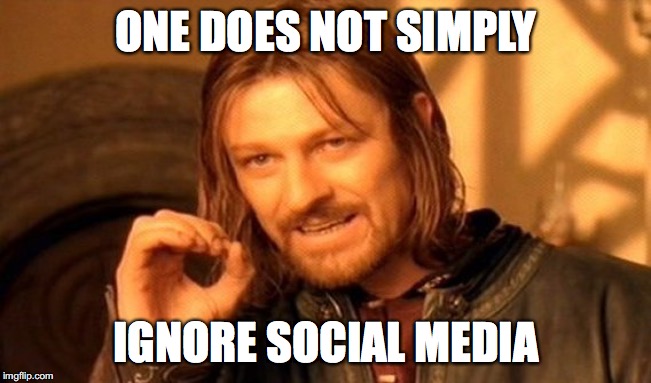Social media can sometimes be overwhelming with its #hashtag filing system and endless supply of in-joke ‘memes’. However, within minutes of using a platform such as Facebook, Instagram or Twitter, it’s possible to interact with people living all over the world.
It’s this ability for us to connect with people anywhere and anytime, with relative ease, that makes it an excellent tool for academics to use when sharing and explaining the relevance of their research findings for society.
Deakin University’s Associate Professor of Wildlife Ecology Euan Ritchie is prolific on Twitter and Facebook. A brief scroll through his feed yields a string of recent tweets and posts relating to his field of research, as well as retweets and shares of news articles and current affairs. He has a little over 7000 followers on Twitter and over 500 followers of his Facebook research page. He also knows how to respond to comments with comedic ‘gifs’, or animated images.
“I realised that publishing my research in scientific journals was only a very small step towards having a positive impact on society and advancing my career,” he says.
Associate Professor Ritchie is a regular contributor for The Conversation, having published more than 45 articles with more than 700,000 reads to date. When an article of his is set to be published, he announces it on social media, accompanied with a link to the work, in order to bolster the readership. He finds that including an infographic can help make the content of his writing more accessible to the general public, as it helps to summarise sometimes complex ecological concepts.
This act of disseminating research in online environments is sometimes known as ‘science communication’.

For Associate Professor Ritchie, one of the benefits of science communication is the opportunity it presents to discover the impact that his research has had on real people. For instance, he’s heard first-hand accounts through social media of how his research on dingoes has affected livestock management and wildlife conservation.
“It’s very rewarding to see my scientific research having an impact beyond ‘just’ academic journals,” he says. “At the end of the day I’m a wildlife ecologist and conservation biologist driven by trying to help provide solutions for environmental problems.
“Using science to form effective on-ground actions mean a lot more to me than journal articles and citations.”
Deakin’s Associate Professor of Marine Science Peter Macreadie is also reaping the benefits that a social media presence has to offer.
“We used to say, ‘it’s not what you know, but who you know’, but nowadays we say, ‘it’s not who you know, but who knows you!’” he says.
Head of Deakin’s Blue Carbon Lab, Associate Professor Macreadie found that uploading to Facebook, Twitter and Instagram on a regular basis resulted in an increased exposure of the Lab’s research.
“We get people coming up to us at meetings and conferences saying, ‘oh hey I recognise you from Twitter!’” he says.
But Associate Professor Macreadie was initially hesitant to delve into the intimidating world of science communication.
“It just seemed like something I didn’t have time for, plus I didn’t ‘get it’,” he says.

“Historically, I have been a little slow on technology. When the world wide web emerged, I scoffed and bought the latest version of encyclopedia Britannica, on CD ROM!”
But then Associate Professor Macreadie attended a university-led social media course for scientists. When he found that Twitter had a particular ability to reach a high number of readers, he decided to test it out. He even enlisted the help of his colleague, Associate Professor Ritchie, to help him get started.
“I did a bunch of tweets, but nothing happened; there were no re-tweets or likes, and hardly anyone wanted to follow me,” Associate Professor Macreadie says. “But I persisted; I kept tweeting about the science I was doing.
“Slowly but surely, I could see that people were taking an interest in it. I eventually started to get more efficient at Twitter, and it didn’t feel like a pointless time suck anymore.”
Blue Carbon Lab’s social media presence has become such a high priority that it now employs a full time Science Communicator to manage it.
Despite its ability to reach a much larger and vastly different demographic of potential readers, some organisations are hesitant to encourage the practice of using social media to promote research.
“Most institutions still don’t value science communication in the way that grants and papers are, so there’s less incentive and perceived individual benefit for scientists to share their work than there should be,” Associate Professor Ritchie says. “Arguably though, effective communication has never been more important for society.”
Both Associate Professors agree that academics have a responsibility to share their findings with the general public, as the research is funded largely by taxpayer dollars.
Sometimes it can be challenging for academics to negotiate having an online presence separate to that of the institutions that they’re connected to. According to Associate Professor Macreadie, the best advice is to simply be genuine.
“It doesn’t hurt to be yourself on social media,” he says. “Being human on social media is a way to separate yourself from your institution’s faceless account.”
“My persona on social media is essentially the same as in everyday life,” says Associate Professor Ritchie. “In my experience, being genuine has led to more meaningful connections with people, and an expanded network and impact.”
It’s also important to state clearly which opinions are yours and which are those of the institution. One possible way to do this is to add the following disclaimer to individual profiles: “Opinions are my own and not the views of my employer.”
As for internet trolls, they’re rare in the context of science communication and easily dealt with.
“Ignore them,” advises Associate Professor Ritchie. “Or, where situations are more serious, use features on the platforms to block and report them.”
You can find Associate Professor Ritchie and Associate Professor Macreadie on Twitter at @EuanRitchie1 and @PeterMacreadie.
Melina Bunting
Staff writer



